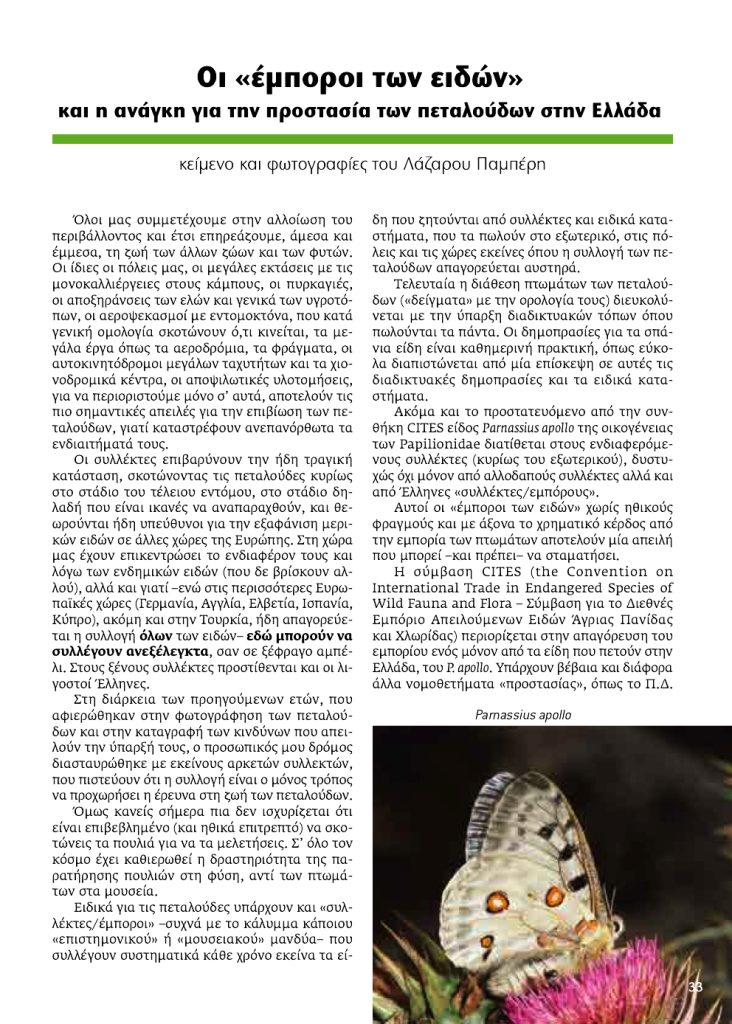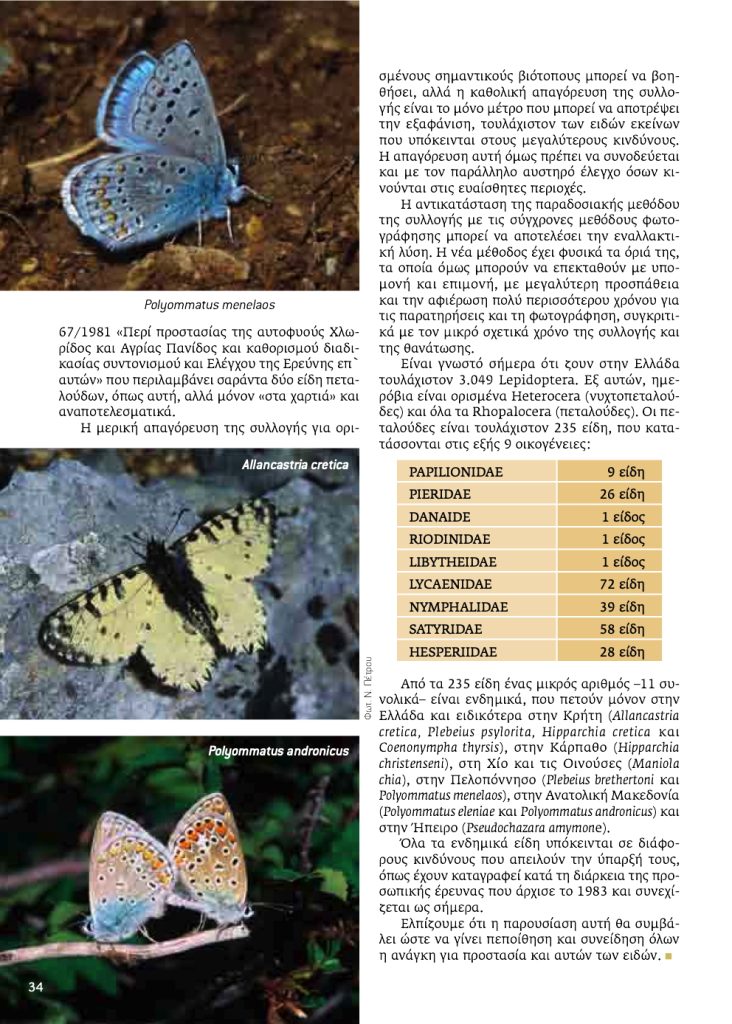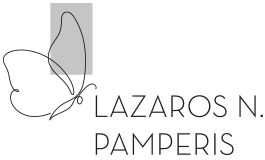This article was published in issue 126 (July-August-September 2009) of the magazine «Η ΦΥΣΗ» (=NATURE) of the Hellenic Society for the Protection of Nature


The “merchants of species” and the need for the protection of butterflies in Greece
Text and photographs by Lazaros Ν. Pamperis
We all participate in the general destruction of the environment and thus affect the life of other animals and plants directly and indirectly. Our cities themselves, the large tracts of monoculture on the plains, the fires, the draining of swamps and wetlands in general, the aerial spraying of insecticides, which by all accounts destroys everything that moves, the big projects like airports, dams, high-speed highways, ski resorts, deforestation, to name just a few, are the most important threats to the existence of butterflies, because they irreparably destroy their habitats.
The collectors add to the already tragic situation by killing mainly the adult butterflies in the perfect insect stage, that is, the stage that is capable of mating. They are already considered responsible for the extinction of some species in other European countries. Here in our country they have focused their interest, because some species of butterflies are endemic (and are not found in other countries), but also because in most European countries (e.g. Germany, England, Switzerland, Spain, Cyprus), but even in Turkey, it is already forbidden to collect all species, which here in our country can be collected uncontrollably, as if on an unfenced vineyard. The few Greeks are added to the foreign collectors
During the past years, dedicated to photographing butterflies and documenting the dangers that threaten their existence, the personal path has crossed with that of several collectors, who believe that collecting is the only way to advance research into butterfly life. But no one today claims that it is imperative (and morally permissible) to kill birds to study them. All over the world the activity of birdwatching has expanded, instead of corpses in museums.
Especially for butterflies there are even “collectors/traders” (even with the cover of some “scientific” or “museum” cloak) who systematically collect every year those species, which are requested by collectors and special shops, who sell them abroad , in those cities and countries where the collection of butterflies is strictly prohibited. Lately the disposal of the corpses of individuals (=specimens in the terminology) of butterflies is facilitated by the existence of online sites where everything is sold. Auctions for rare items are a daily practice, as can easily be seen from a visit to these online auctions and specialist shops.
Even the (CITES-protected) species Parnassius apollo of the Papilionidae family is offered and available to interested collectors (mainly abroad, unfortunately not only by foreign collectors but also by Greek “collectors/dealers”. These “merchants of the species” without moral barriers and with an axis of personal monetary gain from the trade of corpses are a threat that can (and must) be stopped.
As mentioned, there is the CITES (Conservation of International Trade in Endangered Species) convention, which is limited to the prohibition of the trade, of the species that fly in Greece, of a single species (P. apollo). There are, of course, various other ineffective “protections”, such as this one, but only on paper, of forty-two species of butterflies with PD 67/1981 for the protection of wild fauna.
A partial collection ban for some important habitats can help, but a universal collection ban is the only measure that can prevent the extinction of at least those species subject to the greatest risks. This ban, however, must be accompanied by the parallel strict control of those who move in the sensitive areas.
The replacement of the traditional method of collection with modern methods of photography can be the alternative solution. The new method has of course its limits, which of course can be extended with patience and perseverance, with greater effort and devoting much more time to observations and photography, compared to the relatively short time of collection and killing. At least 3049 Lepidoptera are known today to live in Greece. Among them diurnal are some Heterocera (moths) and all Rhopalocera (butterflies). Butterflies are at least 235 species, in the following 9 families:
-PAPILIONIDAE: 9 species
-PIERIDAE: 26 species
-DANAIDE: 1 species
-RIODINIDAE: 1 species
-LIBYTHEIDAE : 1 species
-LYCAENIDAE: 72 species
-NYMPHALIDAE: 39 species
-SATYRIDAE: 58 species
-HESPERIIDAE: 28 species
Out of the 235 species, a small number of 11 species are endemic, flying only in Greece and especially in Crete (4 species: Allancastria cretica, Plebeius psylorita, Hipparchia cretica and Coenonympha thyrsis), in Karpathos (1 species: Hipparchia christenseni), in Chios and Oinussai (1 species: Maniola chia), in the Peloponnese (2 species: Plebeius brethertoni and Polyommatus menelaos), in Eastern Macedonia (2 species: Polyommatus eleniae and Polyommatus andronicus) and in Epirus (1 species: Pseudochazara amymone).
All endemic species are subject to various risks, which threaten their existence, which have been recorded during the personal research that began in 1983 and continues to this day. We hope that this presentation will contribute to the conviction and awareness of the need to protect these species.


